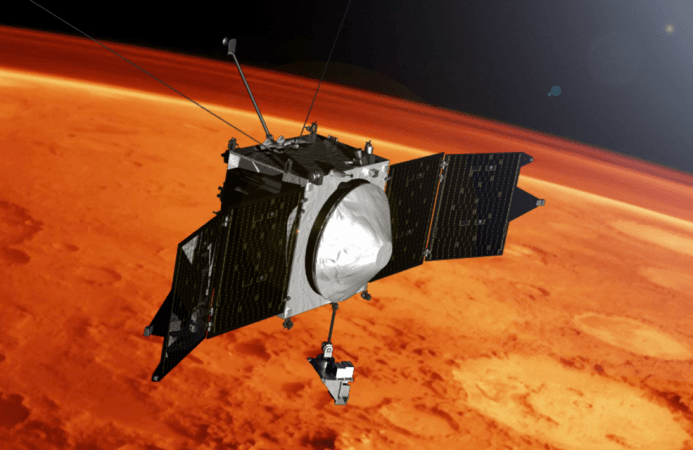
NASA's MAVEN (Mars Atmosphere and Volatile Evolution Mission) spacecraft has discovered the presence of metal in Mars's atmosphere.
Also Read: Pink Moon 2017: Best time and places to watch the phenomenon; how it got its name
These electrically charged metal atoms (ions), can reveal and map the activity that has been taking place in the Red Planet's atmosphere over the many millennnia.
"MAVEN has made the first direct detection of the permanent presence of metal ions in the ionosphere of a planet other than Earth," Joseph Grebowsky of NASA's Goddard Space Flight Center in Greenbelt, Maryland, said in a NASA statement.
According to the team of scientists carrying out the study, this research may help solve the mystery of how the Red Planet transformed into an airless planet and lost its ability to support life.
MAVEN has been exploring Mars's upper atmosphere – the ionosphere – in order to understand the Red Planet's transformatio to a cold barren planet over a span of billions of years.
"Because metallic ions have long lifetimes and are transported far from their region of origin by neutral winds and electric fields, they can be used to infer motion in the ionosphere, similar to the way we use a lofted leaf to reveal which way the wind is blowing," said Grebowsky, who is lead author of a paper on this research, published in the journal Geophysical Research Letters.
The research revealed that a constant rain of tiny meteorites may be the source of the metal the entered the planet's atmosphere.
When these meteorites hit the Martian atmosphere at a high velocity, they vaporised. Other charged atoms in the ionosphere ripped away some of the electrons present in the meteorites' vapour trail, turning metal atoms into electrically-charged ions.
There have been earlier hypotheses regarding the prevalence of metal ions in the atmosphere above other planets in our solar system, but this detection of ion metals by MAVEN is the first conclusive proof of their existence on another planet.
"Observing metal ions on another planet gives us something to compare and contrast with Earth to understand the ionosphere and atmospheric chemistry better," Grebowsky concluded.
















